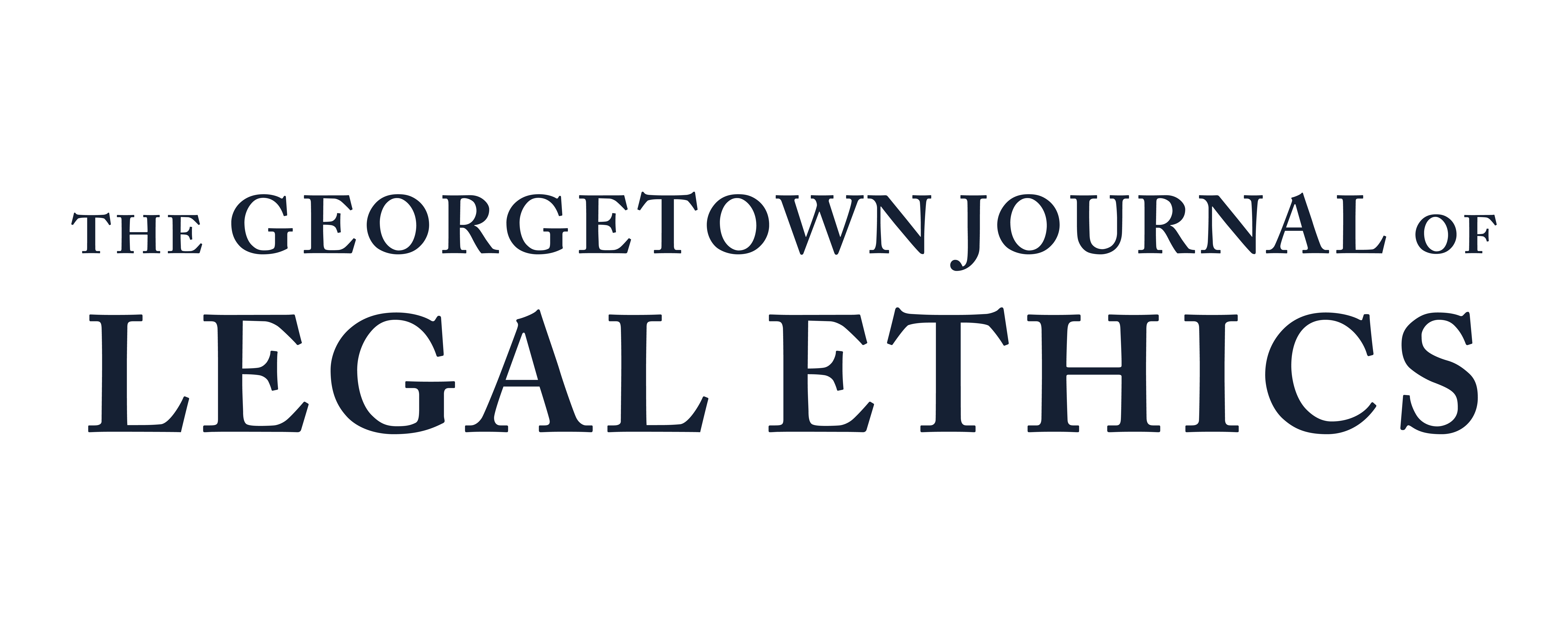Identifying Personal Conflicts: Collating Guidance from the American Bar Association
March 14, 2025 by Charlie Williams

Introduction
It is no secret that lawyers spend a lot of time dealing with other lawyers. They run the gauntlet of law school and the bar exam, surrounded by other soon to be lawyers who go on to become colleagues and clients. Once in practice, they interact with each other in court, on deals, and in professional organizations. As a result of this proximity, many lawyers develop close professional and personal relationships with other lawyers at similar points in their career. In this professional ecosystem, it is inevitable that lawyers will eventually find themselves working with or against a friend on a case or deal. But how does a lawyer know when such a relationship gives rise to a conflict of interest?
What Actions Must Attorneys Take When They Have a Personal Conflict?
For a long time, Model Rule 1.7 offered the primary guidance on the issue. The text of the rule is broad, advising lawyers that their “personal interest” can give rise to a conflict of interest.[1] Comment 11 to Model Rule 1.7 helpfully clarifies that there is a “significant risk” of a conflict when dealing with a lawyer who is a spouse or close relative.[2] When such a risk of conflict arises, a lawyer should first consider their role in the matter. Lawyers who have decision-making authority or frequent contact with opposing counsel should err on the side of caution and obtain written consent from their clients or withdraw from the matter.[3] In contrast, lawyers with a “subordinate or tangential role” in the matter are less likely to need to obtain their clients written informed consent.[4]
But those conflicts are easy to identify. An obvious conflict arises, for example, when a lawyer operating on a contingency basis is negotiating a settlement with a spouse who they share finances with. The trickier question is when a less intimate relationship gives rise to a conflict of interest and corresponding duty to inform your client.
Acquaintances, Friendships, and Intimate Relationships
The American Bar Association Standing Committee on Ethics and Professional Responsibility addressed this question in Formal Opinion 494.[5] In this opinion, the Standing Committee divided personal relationships that could potentially give rise to a conflict of interest into three categories: acquaintances, friendships, and intimate relationships.[6]
Acquaintances are people that the lawyer shares a “coincidental or relatively superficial” relationship with.[7] They may attend the same place of worship or see each other at social events, but they do not feel a “close personal bond” with one another.[8] These relationships do not give rise to a personal conflict of interest that requires disclosure; it is left to the lawyer’s discretion whether to disclose the relationship to the client.[9] However, the Standing Committee advised that disclosing even these relationships can foster good client relationships by reassuring them you will be able to work collegially with the other lawyer.[10]
Friendships, as Formal Opinion 494 acknowledges, are the trickiest category to identify when a personal conflict arises.[11] Depending on the specific nature of the friendship, lawyers may be ethically obligated to disclose the relationship or obtain written consent from the client. Friendships cover all of the space between acquaintances and intimate relationships, making bright-line rules for personal conflicts in this area difficult. Instead, the Formal Opinion recommends analyzing the closeness of the friendship with an eye toward whether the “clients will be materially limited by a lawyer’s relationships.”[12] Lawyers who exchange holiday gifts, whose children are friends, or vacation together should disclose the friendship and obtain informed written consent from their clients.[13] On the other hand, if opposing counsel is a former law school classmate that occasionally keeps in touch, the lawyer should exercise their judgment as to whether to inform their client or obtain informed consent.[14]
Intimate relationships arise when lawyers are engaged, in an exclusive relationship, or cohabit.[15] If lawyers have an intimate relationship with opposing counsel, Formal Opinion 494 states that they “must disclose the relationship to their respective clients.”[16] Further, they cannot continue to represent their clients “unless each client gives informed consent confirmed in writing.”[17] Even then, the lawyers should exercise their judgment as to whether they can effectively represent their clients given their personal conflict. Formal Opinion 494 also advises that lawyers in an intimate relationship but who are not exclusive or cohabiting “carefully consider” the impact the relationship could have on their ability to effectively represent their client.[18] In such circumstances, it still may be best to err on the side of caution by disclosing the relationship and obtaining informed consent.
Finally, even if lawyers determine they have personal conflicts that require them to withdraw from representing their clients, they do not have to worry about imputing the conflict onto their partners or associates. Model Rule 1.10(a)(1) expressly carves out personal interest conflicts so long as they do “not present a significant risk of materially limiting the representation of the client by the remaining lawyers in the firm.”[19] In that way, personal interest conflicts can be easier to navigate than current or former client conflicts. Lawyers can avoid the conflict without having to worry about the impact it will have on their firms.
Conclusion
Lawyers must remain vigilant for personal relationships that may cause conflicts of interest under the Model Rules. They should consider what category the relationship falls into and exercise their judgment about when to disclose a relationship, even if not strictly required. Friendships, in particular, are a tricky relationship to navigate while ensuring the client receives effective representation. By familiarizing themselves with the American Bar Association’s guidance, lawyers can balance their ethical responsibilities with their personal relationship. Lawyers should also make sure to check if there is any further guidance or authority within their local jurisdiction.
[1] Model Rules of Prof’l Conduct R. 1.7 (2023) [hereinafter Model Rules].
[2] Model Rules R. 1.7 cmt. 11 (2023).
[3] ABA Comm. On Ethics and Prof’l Responsibility, Formal Op. 494, at 4 (2020).
[4] Id. at 4.
[5] Id.
[6] Id. at 1.
[7] Id. at 7.
[8] Id.
[9] ABA Comm. On Ethics and Prof’l Responsibility, Formal Op. 494, at 8 (2020).
[10] Id.
[11] Id. at 6.
[12] Id. at 7.
[13] Id.
[14] Id.
[15] ABA Comm. On Ethics and Prof’l Responsibility, Formal Op. 494, at 5 (2020).
[16] Id.
[17] Id.
[18] Id. at 6.
[19] Model Rules R. 1.10(a)(1) (2023).

